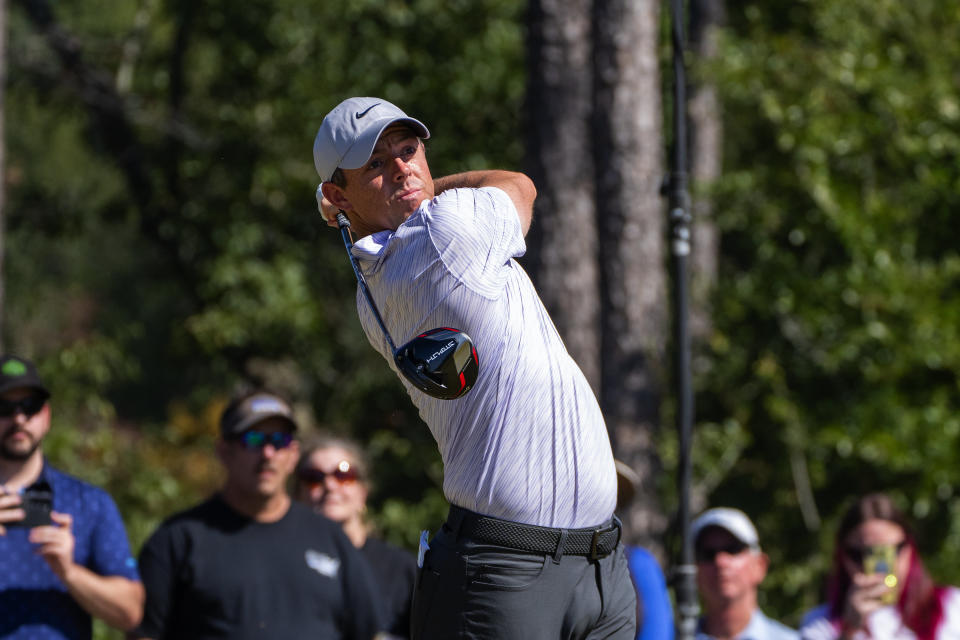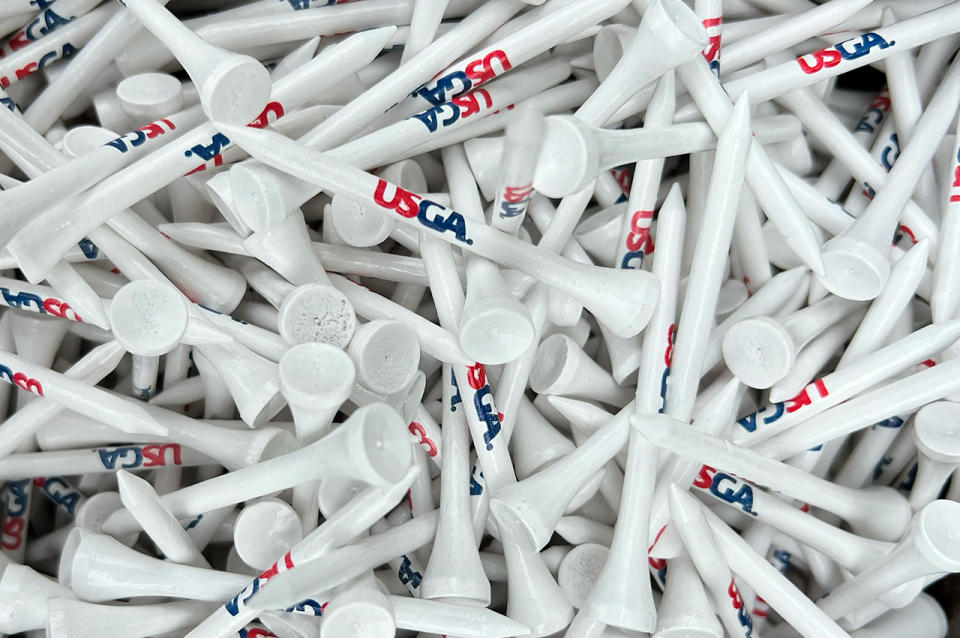Golf distance debate: What you need to know as USGA, R&A close in on major announcements

Sunday marked the end of the first LIV Golf season, and whether you are a fan of the upstart tour or not, there’s no denying player defections, the massive payouts that LIV golfers have received and Greg Norman’s squabbles with the Official World Golf Ranking system were big storylines in 2022. Looking ahead, the continuing saga of LIV Golf will assuredly be a huge part of the golf narrative in 2023, too, but it might be eclipsed early in the season by news coming from Far Hills, New Jersey, and St. Andrews, Scotland.
The USGA and the R&A, the governing bodies of golf, proclaimed that they feel distance is a problem for the game in February 2020, and since that time, they have slowly and methodically been studying equipment testing methods, equipment designs and different aspects of the game to come up with a solution.
The deadline for manufacturers, industry insiders and stakeholders to send the USGA and R&A feedback, information and research was Sept. 2. Now, with the holidays approaching and just two months remaining in 2022, the USGA and R&A are reviewing submissions and developing concepts they could announce soon to reduce distance.
Here is where we are in the distance debate, what we know and what we don’t know:
Golf balls: New tests could could make many of today's balls non-conforming

A look at several golf balls that have been cut in half to show their insides. (David Dusek/Golfweek)
Since 2003, golf balls have been tested by being hit with a test driver that is swung by a robot at 120 mph. If the ball’s combined carry distance and roll is 317 yards or less (with a 3-yard tolerance), it is deemed conforming and legal for play.
On March 26, the USGA and R&A jointly announced Areas of Interest, officially giving notice to manufacturers and the industry that it wants to study possible changes to how golf balls are tested, increasing the clubhead speed to 125 mph and creating a launch angle ranging between 7.5 and 15 degrees, with backspin rates from 2,200 rpm and 3,000 rpm.
Then, on June 8, eight days before the start of the 2022 U.S. Open at The Country Club in Brookline, Massachusetts, the USGA and R&A jointly released a notice to equipment manufacturers.
“Our research is focused on club head speeds between 125 and 127 mph and will include studies of the effects of these test speeds on the launch conditions and aerodynamics of the golf ball,” the notice said.
John Spitzer, the managing director of equipment standards, told Golfweek in March that some balls currently on the market might be deemed non-conforming by standards the USGA and R&A wanted to explore. If ball test speeds are increased to 127 mph, Golfweek has been told by two industry experts that even more popular balls could fail the USGA and R&A’s new tests, and become non-conforming.
Clubs: Exploring slower faces and less forgiveness for elite players

Rory McIlroy plays from the fourth tee during the final round of The CJ Cup in South Carolina. (Photo: David Yeazell-USA TODAY Sports)
In March, the USGA and R&A also announced they wanted to study how Model Local Rules could be used to mandate distance-reducing equipment in elite-player events. The June announcement to manufacturers also stated the USGA and R&A want to research the use of Model Local Rules, “to explore reduction of the spring-like effect in drivers; and changes to the Moment of Inertia limit of drivers to enhance the reward of a central impact.”
A Model Local Rule is a rule or stipulation that tournament organizers and golf clubs can adopt to mandate something, effectively adding an additional rule for a specific event or course.
For example, the USGA recently added a Model Local Rule that limits the length of a driver to 46 inches, and it was adopted by the PGA Tour, LPGA and DP World Tour, so in events run by those organizations, drivers that are longer than 46 inches are not allowed, but recreational golfers can still use them at local clubs.
The USGA and R&A want to see if Model Local Rules that would mandate the use of clubs with less flexible faces and club heads that are less stable on off-center hits could increase the value of hitting shots in the middle of the hitting area for elite golfers.

(Photo: Rob Schumacher-USA TODAY Sports)
The governing bodies added, “Our research is focused on CT [characteristic time] values not more than 200 milliseconds and not less than 150 milliseconds. Research on the Moment of Inertia is focused on values as low as 2,000 g-cm².”
Characteristic Time is a measure of how much trampoline effect a club’s face has, and right now it is capped at 239 milliseconds. The greater the CT, the greater the trampoline effect and the more ball speed a golfer can create.
A veteran club designer told Golfweek recently that lowering CT to around 175 milliseconds would reduce ball speed by about 5 or 6 miles per hour for a fast-swinging player, which could translate to 15 to 18 yards less distance off the tee.
The higher a driver’s moment of inertia (MOI), the greater its stability and the more it resists twisting on off-center hits. That results in shots that fly straighter when the ball is struck near the heel or toe. The current limit for MOI is 5,900 g-cm² and some drivers approach that level, but nearly all are above 4,500 g-cm², so dropping down to even 3,000 g-cm² would be massive.
Another club engineer told Golfweek that all of his company’s drivers, fairway woods and hybirds have an MOI above 2,600 g-cm².
If Model Local Rules were created by the USGA and R&A that reduced characteristic time and reduced MOI, and they were adopted by the professional tours, mis-hit drives would fly less far shorter and curve more.
What appears to be off the table

USGA golf tees (David Dusek/Golfweek)
The USGA has written that it is not looking further into some areas related to distance.
1. Tee height. “There were some situations, especially in robot testing, where significantly reducing teeing height led to substantial distance reductions,” the USGA stated in June. “However, ball and club design or selection has been shown to mitigate this, and effects were not consistent across all golfers in testing, and as such this area is not being pursued as a mechanism for change to driving distance.”
2. Different sizes and weights for golf balls. The USGA has stated that, “Though some golfers may benefit from using golf balls with lower weight or larger diameter, advantages were not identified for significant changes to size or weight specifications, and some effects (including trajectory height and wind response) may be undesirable.”
When will we know?

Stuart Francis, from left, Mike Whan and John Bodenhamer at the 2022 U.S. Open. (David Dusek/Golfweek)
There is an unwritten rule among the game’s organizations that you don’t make an announcement or drop a news item around the time of another organization’s event. For instance, it would be very surprising for the Augusta National Golf Club to make an announcement regarding the Masters Tournament a week before the Ryder Cup, which is a PGA of America event, and the USGA would prefer not to drop a big news item on the Monday after the Players Championship, the crown jewel of the PGA Tour. For that reason, as well as other internal reasons, the USGA has typically made announcements with regard to distance findings in February, a month when other golf organizations are typically quiet.
That means if history is a guide, in about three months we could get an announcement about how the USGA and its partner, the R&A, intend to change equipment standards and rules to battle distance.

